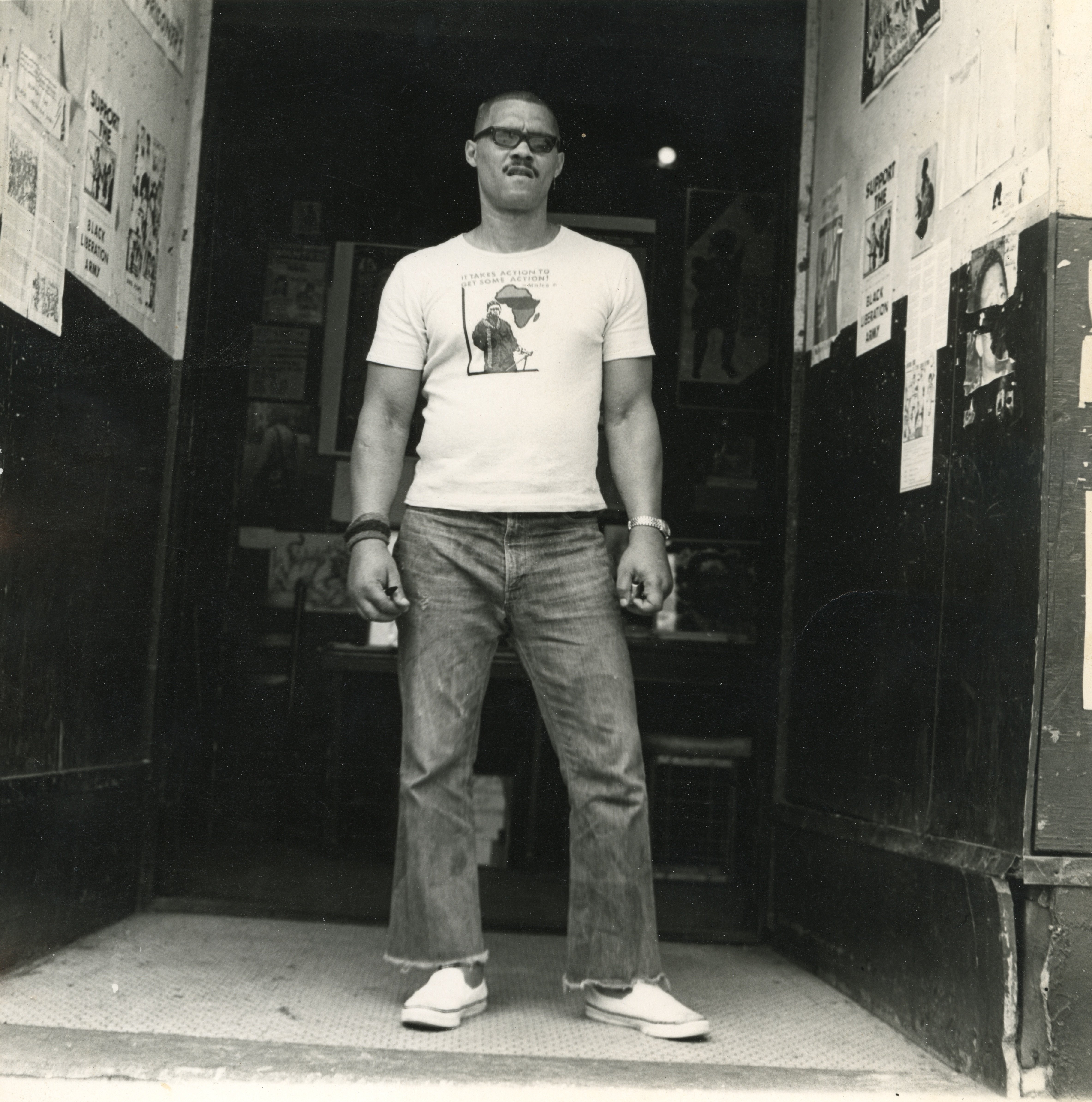Background on Frankie Ziths

Frankie Ziths in front of the Black Panther Party Harlem Branch office, 1977. Photo by Kwesi Balagoon (with Ziths's camera).
From his early work in the Black Panther Party and prisoner advocacy, to his later work as news and celebrity photographer, Frankie Ziths' work as photographer and activist located the political and cultural pulse of its time and responded in both image and action.
Born Frank Gumbs, Jr. on December 6, 1933 in the Bedford-Stuyvesant neighborhood of Brooklyn, Frankie "Ashbuloh" Ziths joined the Black Panther Party in the late 1960s. As a member of the Black Panthers, he organized the Party's legal aid, food, and clothing programs in New York City. He also worked as the New York photographer for Panther newspapers Right On! and The Black Panther, for which he covered the 1970-1971 trial of the Panther 21.
During the 1970s, as members of the Black Panther Party's Harlem Branch were arrested and jailed or moved underground, Ziths kept the Branch's programs moving forward. Most notably, Ziths took charge of the National Committee for the Defense of Political Prisoners (NCDPP), a Panther initiative which raised awareness and funds to support political prisoners. The NCDPP coordinated correspondence with inmates and kept prisoners informed about political activity on the outside. The NCDPP also worked to educate the larger community about the realities of incarceration, circulating mimeographed communications and press releases. As chair of the NCDPP, Ziths coordinated the efforts of defense committees, organizing community support for prisoners at court dates and demonstrations, working with prisoners' lawyers, and raising money for legal defense and prison commissary. Ziths maintained long-standing correspondences with incarcerated activists, sending prisoners reading material and money, often from his own pocket. Ziths resigned as NCDPP coordinator in 1975.
Prompted by his wife Barbara Dee, Ziths began preserving material documenting the Panther 21 trial. When the Harlem Branch of the Black Panther Party closed in 1981, Dee and Ziths gathered a trove of documents from the Harlem office for preservation.
In the late 1970s, Ziths worked as a New York City news photographer and paparazzo, eventually becoming one of the city's most sought-after news photographers as a stringer for the Associated Press and The New York Times. Ziths was lead AP and Times photographer at the Joel Steinberg murder trial and the Howard Beach and Bensonhurst murder trials. Ziths was also active as a celebrity photographer, and formed relationships with figures such as Brooke Shields, Billy Joel, and Mia Farrow. While the movement from Panther to paparazzo might seem radical, Ziths who found continuity in a careful documentation of celebrity culture, which, with its extravagance, represented an authentic facet of the American ethos. Ziths remarked in an interview that he "chose celebrity photography because that seemed to be where the nation's consciousness was" (Newsday, 1991). In addition to his widely published news and celebrity photography, Ziths was an incisive documentarian and street photographer. His remarkable body of unpublished documentary work represents a vital yet little-known part of his oeuvre.
Ziths continued working as a freelance photographer until shortly before his death, from lung cancer, on December 31, 1990. In the draft of a note to friends, penned four months before his death, Ziths sums up his life's work: "All my life since my preadolescent years, I have arduously struggled against all odds that the People, not the heroes and charismatic superstars our society keeps pumping our way to throw us off our balance, the everyday women and struggling masses are the real heroes whose destiny lie in our own hands" (July 29, 1990). The Frankie Ziths collection is the story of these people.

